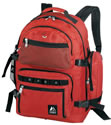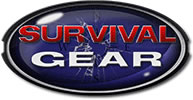Home Emergency Kit
A home emergency kit contains emergency supplies that help you during a natural disaster or a catastrophe. In an emergency, it may be impossible to travel roads or there may be stores closed because of no electricity. In any case, you should be prepared to take care of yourself and your family during this period of time without any outside aid.
Your home emergency kit should contain emergency gear and supplies for any contingency. If an earthquake occurs, you may not even be able to stay inside your house. During a hurricane, you may be stuck inside your home. After any natural disasters, running water and electricity may be out. Trees could down blocking normal travel paths. Point is that you may have to fend for yourself for a period of time.
Emergency food and water should be stocked so that you have them available when needed. Canned goods and bottled water do not have a long shelf life. If you rely on these, be sure to rotate your stock at least twice a year so you always have fresh food and water. Bottled water really has about a six-month shelf life so you can't store it and forget it.
Planning for emergencies makes you think about what you would need without modern conveniences. If your home is uninhabitable due to instability, then you'll need another form of shelter. A tube tent, tarp, lean-to, or any other emergency shelter may be home for a while. A tornado can tear your home down. Your home emergency kit should definitely contain alternate forms of shelter.
Along with your home emergency kit, you should have extra clothing including hats and gloves to keep warm. If your electricity goes out in winter, your home could become a large ice box. Having these insulating items set aside will give everyone what they need to stay as comfortable as possible. If you're forced to live outside in your emergency shelter, warm clothing is that much more important. Putting your additional clothing, hat, and gloves in a separate spot next to your survival kit will ensure you're able to grab them on your way out.
Inside your home survival kit, you'll have fire starting material. If you have to live outside, having a fire will be a source of warmth, light, and comfort. The comfort value of a fire can not be underestimated or understated. Being able to sit around a warm fire in an inhospitable environment is as good as it gets. Without one, your time spent will be miserable. If you don't have a fire in dead of winter, you will all be cold. Being cold is uncomfortable. When you're cold, you just want to get warm. This can be a good thing if there's work to be done. Keeping yourself busy by moving around and doing work will keep you warm but eventually, you're going to stop. Having a nice blazing fire in a forced outdoor experience is just what you'll want.
Always have multiple ways of starting a fire in your home emergency kit. Waterproof matches, windproof matches, the mil-spec Spark-Lite, magnesium fire starter, along with fire sticks and emergency tinder are all options available on this website or are already included in our survival kits. Redundancy is key. You want to have more than one method of being able to start a fire in case one fails or you lose one. The warmth and heat of a fire can prevent hypothermia and can dry out wet clothes. A fire also allows you to cook food and to purify water. Remember, water sources may not be safe to drink. Bringing water to a boil and boiling for 10 minutes will kill anything that can cause you to get sick.
A home emergency kit should also contain a first aid kit. Taking care of cuts and scrapes in an unsanitary environment is important. You don't want an infection to spread when a doctor or hospital is not going to be available. Your first aid kit should be much more than just something for cuts and scrapes. In an emergency, there is a real possibility of serious injury. You want a comprehensive first aid kit that prepares you to deal with any medical emergency. In your home, we recommend either the Comprehensive Medical Kit or the Fundamentals First Aid Kit. Both of these prepare you to deal with many medical injuries including broken bones or fractures, burns, and trauma wounds. The Weekender First Aid Kit is also great for home as a regular and daily use medical kit. Be sure to restock any items you may use from your first aid kit. In a natural disaster, catastrophe, or any other emergency, your first aid kit may have to help other people other than you and your family.
Maintaining sanitary conditions in a field environment is challenging, yet important. When you're clean, you feel good. When you're not, you don't. Not maintaining your personal hygiene also opens you up to unhealthy bacteria. Bacteria multiply and begin to affect your health. Wet naps, baby wipes, and full body wipes can bathe you in an outdoor environment. During an emergency where you don't have running water, keeping yourself clean is very important. Personal hygiene will keep you healthy and keep you going.
 Preparing your home emergency kit forces you to think about what you'd need in a real emergency. Our elite survival kits give you quality survival gear you can put to use if you're faced with a natural disaster or other emergencies. They contain many essential items that can help you survive on your own when normal services and modern conveniences are unavailable. Don't forget to think about personal items such as prescription meds when putting this together. Only you know exactly what you need. Don't count on emergency services to bail you out. You only need to remember Katrina and those who did not prepare. They felt they would be taken care of only to realize they were wrong. It's your responsibility to care for yourself and your family, not the government's.
Preparing your home emergency kit forces you to think about what you'd need in a real emergency. Our elite survival kits give you quality survival gear you can put to use if you're faced with a natural disaster or other emergencies. They contain many essential items that can help you survive on your own when normal services and modern conveniences are unavailable. Don't forget to think about personal items such as prescription meds when putting this together. Only you know exactly what you need. Don't count on emergency services to bail you out. You only need to remember Katrina and those who did not prepare. They felt they would be taken care of only to realize they were wrong. It's your responsibility to care for yourself and your family, not the government's.
